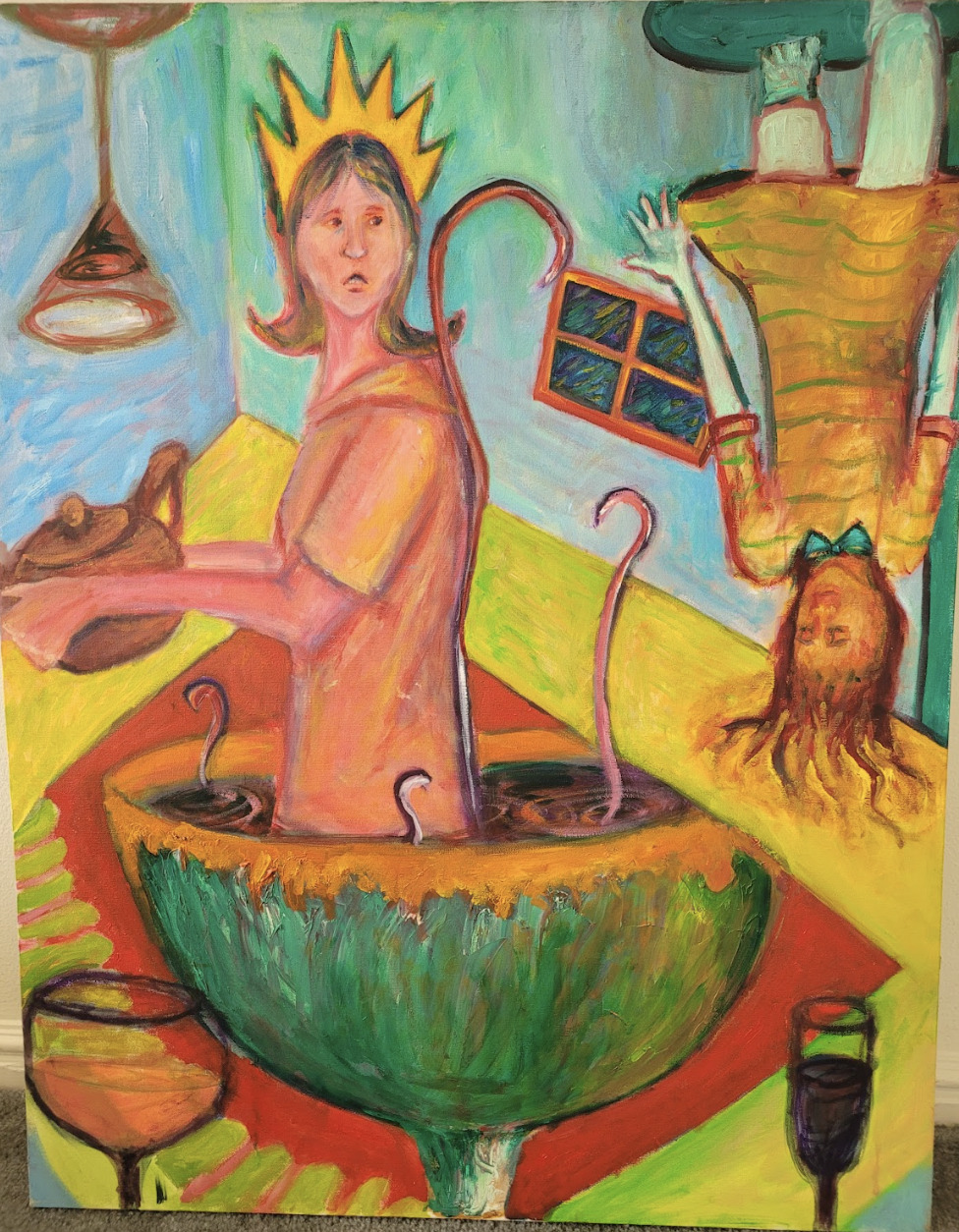The Visual Arts program at Lick-Wilmerding High School has been described by former students as worldview shaping, and judgment-free space. The program has been a staple at LWHS throughout school history, and several alumni have gone on to pursue careers in the Visual Arts.
One such example is Jennifer Clare ’95, an alumni who was deeply involved in the Visual Arts program during her time at LWHS. She said, “the Visual Arts program was fantastic. It was the highlight of my time at Lick and is one of the things that I remember most about the school. I think I took every art class possible except for photography.”
Clare said that for her, the art room “was beyond just a classroom. It really was where I shaped my worldview for the next 25+ years.”
When she was at LWHS, the art studio was always open so she would make art all the time. For Clare, these classes were when “it really clicked what being an artist was about. I was always [in the art studio] and it was sort of my second home.”
After doing a lot of painting in her 20s, Clare mostly works on literary arts now. She said at LWHS she learned what being an artist meant to her which was, “for me that was about seeing things in a different way,” whether it be painting, writing, or anything else.
For her senior project, Clare designed the sets for Shakespeare’s Winter’s Tale, combining her love of art and theater. She said, “All of the different art classes and training that I had taken came together.”
Amelia Humble ’95 was also deeply involved in the arts.
Humble really enjoyed the freedom that was offered within arts classes at LWHS, in addition to the freedom of simply having so many options as electives. She said, “It was really supportive. We had a lot of resources to work with and we were given quite a lot of freedom to just explore our interests and experiment.”
She especially enjoyed Oleg Osipoff’s Drawing and Painting class, which still exists today. Sometimes the class did not even feel like school work; she described the class as “a long stretch of free time basically to use whatever technique he was teaching us.”
A project from the class that stands out in her memory was oil painting. Osipoff taught how to mix colors and use paint thinner. She said Osipoff’s mentorship “was really open-ended. There was no judgment.”
Humble also took photography during her time at LWHS. She said that it taught her “how to think creatively without limits. That freedom to expand what you think would be possible.”
After LWHS, Humble attended New York University for studio art. She has a master’s degree in graphic design from the Pratt Institute. Currently, she runs an Esty shop where she sells hand-crafted jewelry. “I just love making things and exploring my own imagination.” In describing this experience she said, “ I really enjoy following my whims and experimenting and constantly learning.”
Unlike Clare and Humble, Andres Amador ’89 is a visual artist who works in nature who was not very involved in the Visual Arts Department during his time at LWHS. Amador described how during his high school years, “[his] path wasn’t really in the arts. I was more of a science person.” Amador studied environmental science at the University of California, Davis.
Amador said he appreciated taking art classes at LWHS, “even though it didn’t feel like this was my calling.” LWHS shop classes allowed him to discover his talent for drafting. “I loved the drafting class. I really got into zoning out into getting everything lined up just perfectly. So I always did well in that class. I appreciated that drafting enables you to get really precise,” he said.
Eventually, after over a three-year stint in the Peace Corps, Amador began drawing crop circles in the sand at beaches. “I was doing these very large geometric shapes, and my drafting skills came in handy because it was all about circles, how circles align and then finding your right angle. It is very intellectually satisfying.”
His official job is now doing exactly that: making art in the sand through commissions, although he says that now he tries to escape the perfectionist mentality. “I feel like my path in life has begun to get out of that left brain perfection and into the more organic and messy and expressive.” Allowing himself space to make mistakes and let things be a little less neat all the time changed Amador’s perception of himself as a creator. That’s where I started to think, ‘I guess I can call myself an artist now,’ because for a long time I didn’t feel that,” he said.






